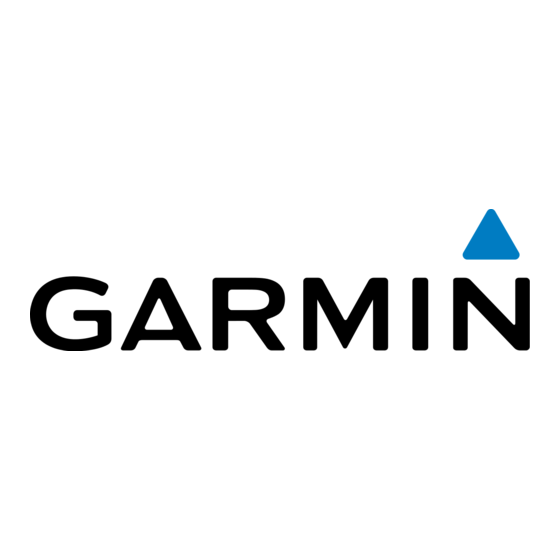Garmin GHP 10V Руководство по установке - Страница 14
Просмотреть онлайн или скачать pdf Руководство по установке для Морское оборудование Garmin GHP 10V. Garmin GHP 10V 20 страниц. Marine autopilot system
Также для Garmin GHP 10V: Руководство по установке (48 страниц), Руководство пользователя (28 страниц), Руководство по установке (20 страниц)

4. Autotune: Before you begin the Autotune procedure, adjust the throttle so that the boat travels at a constant RPM below planing speed, with
enough speed to maintain responsive steering. Select
the Autotuning is in progress. When the GHC 10 displays a completion message, select Done. Be sure to resume manual control of the
boat when Autotuning is complete.
If the Autotuning fails:
•
Increase the throttle approximately 200 RPM and select
•
If it fails again, continue retrying the process adding increments of 200 RPM.
•
If you reach planing speed through adding increments of 200 RPM and the autotune procedure continues to fail, reduce speed below
planing speed and select
Caution: The Alternate Autotune is only applicable to a small number of boats, and should be the last attempt at autotuning. Do not perform the
Alternate Autotune until you are sure the standard autotune procedure will not work on your boat.
5a. Set North (with an optional GPS device connected): To perform this step, you must have a large stretch of open water available. Be sure
to have at least 45 seconds of hazard-free, open water available while at planing speed. Drive the boat in a straight line, at planing speed,
and select
Begin
when you are ready. When the GHC 10 displays a completion message, select Done. If the calibration fails, select
to begin the process again.
5b. Fine Heading Adjustment (without an optional GPS device connected): To perform this step, manually adjust the heading to match a
compass on the boat or other known heading reference.
Evaluating the Results of the Autopilot Configuration
When the Sea Trial Wizard is complete, test the autopilot to be sure it is configured correctly. Test the autopilot first at slow speeds (below
planing), and then test the autopilot at planing speeds.
To test the autopilot configuration:
1. Drive the boat in one direction with the autopilot engaged (heading hold). The boat should not oscillate significantly; however, a small
amount of oscillation is normal.
2. Turn the boat in one direction using the autopilot. When you release the turn button, the boat should overshoot the turn and quickly correct
the heading to the point at which you released the button. You will notice that the faster you are going, the greater the boat will overshoot the
turn.
3. When the autopilot turns the boat, it should not feel as though it turns too aggressively or too sluggishly.
4. If the autopilot is configured properly at slow speeds, repeat these tests at planing speed, and vice versa.
To adjust the autopilot rudder gain configuration if necessary:
1. If you feel that the heading hold oscillates significantly or that the autopilot does not quickly correct the heading when turning, you can make
slight adjustments to the rudder gain.
note: When you manually adjust the rudder gain (or counter gain), make small adjustments, and adjust only one value at a time. Test the change
before entering any further adjustments.
2.
Power on the GHP 10V using the advanced configuration power-on procedure (page
3. On the GHC 10, select
Menu
gain adjustments. There are two types of gain settings at both low and high speeds:
•
Rudder Gain—Adjusts how aggressively the rudder holds the heading and makes turns. If you set this value too high, the autopilot may
be overactive, constantly adjusting the rudder in reaction to slight heading deviations, which can lead to undesired rudder oscillation. An
overactive autopilot can cause excess wear and tear on the steering system. If this value is too low, the autopilot will be slower to execute
course changes and will allow more error around your desired heading.
•
Counter Gain—Adjusts how tightly the rudder corrects the turn overshoot. If you set this value too low, the autopilot can excessively
overshoot on course changes. If this value is too high, the pilot will be slow to execute course changes and will seem less responsive.
To adjust the autopilot turning configuration if necessary:
1. If you feel that the autopilot turns the boat too aggressively or too sluggishly, you can make slight adjustments to the turn acceleration limiter.
note: When you manually adjust the acceleration limiter, make small adjustments. Test the change before entering any further adjustments.
2.
Power on the GHP 10V using the advanced configuration power-on procedure (page
3. On the GHC 10, select
Menu
1
Begin
Alternate Autotune
to begin an alternate autotuning procedure.
>
Setup
>
Dealer Autopilot Configuration
>
Setup
>
Dealer Autopilot Configuration
when you are ready. The boat will perform a number of zigzag motions while
Retry
to begin the process again.
13).
>
Turn Fine Tuning Setup
13).
>
Turn Fine Tuning Setup
>
Rudder Gains
to access the rudder
>
Acceleration
Limiter.
GHP 10V Installation Instructions
Retry
